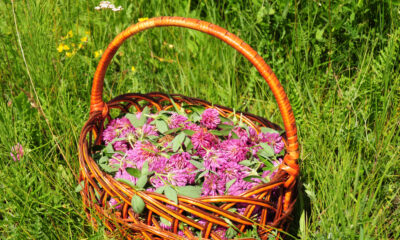Ancient History
Living Like the Tortoise: Doubling Your Life Span with One Simple Breathing Technique

Is it possible for humans to live for 200 years, or even more? It seems improbable without some kind of freakish genetic modification, but this isn’t necessary according to ancient wisdom in the Bhagavad Gita, and the Tirukkural.
Among vertebrates, the tortoise is one of the longest living animals on our planet. Unconfirmed reports talk of the tortoise living for as many as 400 years, and it is not unusual to find a tortoise like Jonathan, that is 182 years old.
How Do You Breathe?
Much of the science of yoga was gained from watching nature and her creatures. Ancient saints and sages noticed that animals with low respiratory rates, like the tortoise, but also like the elephant, and the other animals listed in the chart below lived longer life spans with a controlled, long breath. You will also notice, though, that as the speed of respiration increases, the life span of the animal shortens.
| Animal | Breathing rate, breaths/min | Life span, years |
| Giant Tortoise | 4 | 150 |
| Whale | 6 | 111 |
| Elephant | 4-5 (lying down) | 70 |
| Horse | 8-15 | 50 |
| Chimpanzee | 14 | 40 |
| Monkeys | 32 | 18-23 |
| Dogs | 20-30 | 10-20 |
Though there are animals on our planet that live even longer, like sponges and sea clams, that can live for more than 400 years, humans are often thought to be relegated to a lifespan of around 70 years – and that’s when all key indicators of life or life force are excellent.
Poets and sages knew better. For example, in a sloka (verse) from the Bhagavad Gita we learn:
“When, like the tortoise which withdraws its limbs on all sides, he (a sage) withdraws his senses from the sense-objects, then his wisdom becomes steady” (Chapter 2-58)
Additionally, here is a couplet from Tirukkural:
“If a man learns to control his five senses in one birth as the tortoise, that power will stand by him in his seven future births.” (Kural 126)
Part of this ‘control of the senses’ refers to the control of the breath.
Though there are many practices in yoga – from meditation to yogic postures or asana, which can help to keep the body well and vital for many years, perhaps non among the yogic practices is as important for the extension of life as learning to control the life force through pranayama.
Pranayama Defined
Pranayama is a Sanskrit word that means literally life force, or an unseen energy, which runs like currents through the body ‘prana,’ and ‘ayama’ which means control, or extension of the life force. Just having an increased life force, without knowing how to control it, is rather useless, according to yogic wisdom.
It can take an entire lifetime to master all the breathing techniques or ‘control of life-force techniques’ offered through yogic science, from Samavrtti, Ujjayi, Kumbhaka, Anuloma Viloma, Kapalabhati, and Sithali, and more, but alternate nostril breathing, or Nadi Shodhana also called Anuloma Viloma, has been scientifically proven to increase life span.
Here’s why:
When the respiratory rate decreases the heart doesn’t have to work as hard to pump blood throughout the body. Our nervous system then calms down and takes a much-needed break, also. You can think of it like the conservation of energy in physics, or putting fewer miles on your car so it will last longer.
Furthermore, one of the absolute key indicators of life span is the resting heart rate. Alternate nostril breathing has been proven to lower the resting heart rate, and thereby expand life span – of course allowing for unexpected events like getting hit by lightening or falling from a ten story building. The natural life-span as we know it, however, does indeed increase when we practice this simple breathing technique.
These facts are corroborated by several scientific studies.
A Danish study, for example, published in Heart, suggests that a higher resting heart rate is an independent predictor of mortality — even in healthy people that are in great physical condition.
Danish researchers gave physical exams to 5,249 healthy middle-aged and elderly men beginning in 1971. In 1985 and 1986, they tracked survivors, of whom there were 3,354. Of these, 2,798 had sufficient data on heart rate and oxygen consumption for the analysis. Researchers followed them through 2011.
After controlling for physical fitness and many other health and behavioral factors, they found that the higher the resting heart rate, the greater the risk for death.
The numbers were quite telling:
Men with a resting heart rate of 50 beats per minute or less compared to those with 71 to 80 beats per minute has a 51 percent greater risk of mortality. At over 90 beats per minute the risk tripled.
The lead author and researcher at Copenhagen University Hospital Gentofte, Dr. Magnus Thorsten Jensen explains:
“If you have two healthy people, exactly the same in physical fitness, age, blood pressure and so on, the person with the highest resting heart rate is more likely to have a shorter life span.”
That’s where pranayama comes in, and specifically alternate nostril breathing.
Not only does this breathing practice “increase cardiac autonomous modulation” (a long-winded way of saying, help out the heart and sympathetic and parasympathetic nervous systems) but it also lowers the resting heart rate. It gives profound rest to the entire physical and energetic system, while also invigorating it.
How to Practice Nadi Shodhana
- Sit comfortably with your spine erect and shoulders relaxed. If you can, sit unassisted, but the most important thing is to keep your spine long so the energy you create through your breath can move up and down your spinal column, called the sushumna in yoga. It may help to do some simple yoga asana before sitting to breathe. Swamij.com has a great lesson on the sushumna for those who want to learn more.
- Place your left hand on the left knee, palms open to the sky or in Chin Mudra (thumb and index finger gently touching at the tips).
- Place the tip of the index finger and middle finger of the right hand in between the eyebrows, the ring finger and little finger on the left nostril, and the thumb on the right nostril. The last two fingers (ring finger and little finger) are used to open or close the left nostril and thumb for the right nostril throughout the practice.
- Press your thumb against the right nostril and breathe out gently through the left nostril.
- Now breathe in from the left nostril and then press the left nostril gently with the ring finger and little finger. Removing the right thumb from the right nostril, breathe out from the right.
- Breathe in from the right nostril and exhale from the left. You have now completed one round of Nadi Shodhan pranayama. Continue inhaling and exhaling from alternate nostrils.
- Complete as many rounds as you can by alternately breathing through both the nostrils. After every exhalation, remember to breathe in from the same nostril from which you exhaled. Keep your eyes closed throughout and continue taking long, deep, smooth breaths without any force or effort. I find it helpful to envision I am breathing in the shape of a rainbow to make the in-breath and out-breath consistent.
You can also watch this video on how to practice Alternate Nostril Breathing – and start enjoying a longer life.
Featured image: Galápagos giant tortoise (Geochelone nigra). Photo: M Kegl/Azote
Ancient History
NASA Finds Underground ‘City’ Hidden 100 Foot Below Icy Surface

In the vast, icy expanses of Greenland, a place more synonymous with desolate, arctic landscapes than with the shadows of human history, NASA scientists have stumbled upon an extraordinary anomaly. Buried beneath a hundred feet of ice lies a remnant of a bygone era, originally hidden from the world above and shrouded in Cold War secrecy. What was initially just another radar scan over the frosty tundra turned into a discovery of an underground “city,” a relic of geopolitical strategies from a tension-filled past. This isn’t a tale of ancient civilizations, but rather a hidden chapter of recent history, now frozen in time, waiting to be uncovered. What secrets does this icy fortress hold?
The Discovery of Camp Century
In a groundbreaking exploration, NASA’s radar technology unveiled an extraordinary find beneath Greenland’s ice—a secret Cold War base known as Camp Century or “the city under the ice.” This discovery, made in April 2024 during a flight testing new radar equipment, revealed intricate underground structures that have not been seen so vividly until now.
While NASA scientists were testing the Uninhabited Aerial Vehicle Synthetic Aperture Radar (UAVSAR) mounted on a Gulfstream III aircraft, they captured a surprising image. Alex Gardner, a cryospheric scientist at NASA’s Jet Propulsion Laboratory, noted, “We were looking for the bed of the ice and out pops Camp Century. We didn’t know what it was at first.” This advanced radar system is not your typical radar; it’s designed to give a more dimensional view of what lies beneath the ice by not only looking downward but also to the sides.

The UAVSAR technology has proven pivotal in this discovery. It allowed the team to see the underground city in unprecedented detail, mapping out the camp’s layout against historical blueprints and revealing structures that conventional radar had missed. This novel imaging technique represents a significant leap in ice-penetrating radar technology, offering new ways to understand the geological and environmental history of icy regions.
The rediscovery of Camp Century is not just a historical curiosity but also provides crucial data for understanding ice sheet dynamics and the potential environmental impact of the materials left behind. As the climate changes, the ice sheets’ response is a vital area of study, with UAVSAR contributing to predictions about sea levels and ice stability.
History of Camp Century
Camp Century, famously known as the “City Under the Ice,” was initially presented to the public as a pioneering Arctic research station. However, its true purpose was far more clandestine. Established in 1959 by the United States Army Corps of Engineers, this secretive base was part of “Project Iceworm,” intended to test the feasibility of deploying nuclear missiles from beneath Greenland’s vast ice sheet directly against the Soviet Union.
On the surface, Camp Century featured accommodations and amenities that supported scientific research and the daily needs of its inhabitants, including laboratories, a library, and living quarters. This facade supported its cover story as a hub for polar research, where significant scientific firsts occurred, such as drilling the first ice cores to provide data on the Earth’s past climate.
Beneath its scientific guise, the camp’s primary objective was far more militaristic. The U.S. planned to create a network of tunnels capable of housing and launching “Iceman” ballistic missiles. These facilities were meant to be part of a broader strategy to ensure the U.S. could respond to Soviet actions during the Cold War. The project was ambitious, aiming to house up to 600 nuclear missiles under the guise of Arctic scientific endeavors.
The base was constructed deep within the ice, with tunnels extending over several miles. Despite the innovative approach to Cold War military strategy, the project faced insurmountable challenges. The ice’s dynamic nature caused structural instabilities within the tunnels, leading to frequent maintenance issues and eventual abandonment of the missile plan. The shifting ice also posed significant risks to the structural integrity of the facility, leading to its decommission in 1967.
In the decades following its closure, concerns have grown over the environmental impact of the waste left behind, including low-level radioactive waste from the camp’s nuclear reactor. Studies suggest that as the climate warms and the ice melts, these contaminants could be released into the environment, posing new risks to the ecosystem.
Technological and Engineering Features of Camp Century
The construction of Camp Century was a remarkable feat of engineering, designed to test the feasibility of establishing military facilities under the harsh conditions of the Greenland Ice Cap. This project was not only ambitious but also showcased a range of innovative construction techniques that have informed cold region engineering practices to this day.
Camp Century was constructed using a “cut-and-cover” method where trenches were dug into the ice and then covered with arched steel structures. This method was crucial in creating the protective tunnels that formed the main structure of the base. The entire facility was then insulated to protect against the extreme cold and to ensure that the heat generated within the base did not cause the surrounding ice to melt.
To support its designation as a self-sustaining underground city, Camp Century included living quarters, a kitchen, a hospital, and even a movie theater, all powered by a groundbreaking portable nuclear reactor, the PM-2A. This reactor was a critical component of the base, providing a reliable power source in an environment where traditional fuel supplies would be logistically challenging to maintain.
The base’s design and construction required innovative solutions to numerous challenges, such as the structural integrity of buildings under ice and the management of thermal effects caused by the heat generated within the base. These innovations have left a lasting impact on polar construction techniques and have been studied for their potential applications in other remote and harsh environments.
Moreover, the data and experience gained from the construction and operation of Camp Century have been invaluable in the development of future designs for ice-cap camps. This project demonstrated that subsurface ice-cap camps are both feasible and practical, and that nuclear power can significantly reduce the logistical burdens of supporting isolated, remote military facilities.
Secrets Uncovered
The unveiling of Camp Century’s true purpose marked a significant chapter in Cold War history. For years, the world believed that Camp Century was solely a scientific research station focusing on Arctic studies and ice core sampling. In reality, it was a cover for a highly classified military operation known as Project Iceworm.
Initially portrayed as a peaceful research facility, Camp Century was publicly celebrated as a model of polar innovation and technological achievement. The facility was featured in documentaries and news articles, praising its advanced infrastructure and the potential scientific advancements it could bring.
The truth about Camp Century came to light in 1997 when the Danish Parliament published documents revealing that the base was intended to serve as an underground launch site for nuclear missiles targeted at the Soviet Union. This disclosure came as a shock to the international community, especially since Denmark had been assured that the operations at Camp Century were purely scientific.
This revelation not only strained U.S.-Danish relations but also raised significant ethical and legal questions about the sovereignty and territorial integrity of Greenland. The Danish government expressed deep concerns, as they had not consented to the militarization of their territory, which they were led to believe was being used for benign scientific purposes.
The declassification of Project Iceworm’s objectives prompted a broader discussion about the environmental impact of the military base, particularly concerning the nuclear reactor used to power the camp. Concerns were raised about the potential release of radioactive materials stored under the ice, which could emerge due to the accelerating ice melt caused by global warming.
Camp Century’s Effect on the Environment
The thawing of Greenland’s ice sheet is poised to reveal the remnants of Camp Century, including hazardous materials such as low-level radioactive waste and polychlorinated biphenyls (PCBs), which are known carcinogens. This potential exposure is a significant environmental threat, as the melting ice could release these contaminants into the surrounding ecosystem and beyond.
As the ice melts, estimated projections suggest that by as early as 2090, the base could become exposed, unveiling not only the physical structure but also the environmental hazards contained within. This includes an estimated 9,200 tons of physical materials, 53,000 gallons of diesel fuel, and other toxic wastes such as PCBs, which have long-term persistence in the environment and can bioaccumulate in wildlife and humans.
The exposure of these contaminants poses not only environmental risks but also political and diplomatic challenges. The cleanup and management of this waste will require coordinated international efforts, potentially straining relationships between the United States, Denmark, and Greenland. The situation underscores the broader impacts of climate change, where thawing ice is not just a physical change but a catalyst for emerging political conflicts over accountability and environmental stewardship.
Echoes from the Ice: Reflecting on Camp Century’s Legacy
The rediscovery and impending exposure of Camp Century not only unearths a relic of the Cold War but also reminds us of the lasting environmental impacts of human endeavors. This hidden base, once a symbol of military ingenuity, now poses significant environmental risks as the consequences of its hazardous wastes are set to re-emerge due to the warming climate. The challenges ahead are not only technical or environmental but also deeply political, involving negotiations and responsibilities that span across nations and generations.
Featured image via Shutterstock, NASA Earth Observatory
Ancient History
The Ojibwa Tribe Combined These 4 Herbs To Make ‘Essiac Tea’, Which Kills Bodily Cancer Cells & Purifies Your Blood Naturally

Deep within the traditions of the Ojibwa tribe lies a remarkable secret—a blend of four humble herbs that has intrigued natural healers and sparked curiosity worldwide. Known today as Essiac tea, this ancient remedy is whispered about for its purported ability to combat disease, purify the blood, and restore balance to the body. Its origins, steeped in indigenous wisdom, and its controversial journey into modern medicine, make it a fascinating tale of nature’s potential to heal.
But what exactly makes this herbal concoction so special? How did the Ojibwa uncover its potent power, and why does it continue to captivate people seeking alternative paths to wellness? The answers lie in a delicate harmony of tradition, science, and mystery—a story waiting to unfold.
Historical Origins: The Ojibwa Legacy and Rene Caisse’s Contribution
The story of Essiac tea begins with the Ojibwa people, an Indigenous group from the Great Lakes region of North America. Renowned for their deep understanding of medicinal plants, the Ojibwa utilized a blend of herbs to create a healing brew believed to purify the body and combat various ailments. This traditional knowledge laid the foundation for what would later be known as Essiac tea.
In the 1920s, Canadian nurse Rene Caisse encountered a patient who had recovered from breast cancer. The patient attributed her healing to an herbal remedy given to her by an Ojibwa healer. Intrigued, Caisse obtained the formula and began administering it to others, naming the tea “Essiac”—her surname spelled backward. From 1922 to 1978, Nurse Caisse provided this herbal supplement to thousands at her clinic in Bracebridge, Ontario, often refusing payment for her services.
Caisse’s dedication to this remedy attracted both support and skepticism. While many patients reported positive outcomes, the medical community demanded scientific validation. Despite the controversies, Caisse remained committed to her work, collaborating with doctors like Dr. Charles Brusch in the 1960s to further research Essiac’s potential.
The Four Potent Ingredients of Essiac Tea

Essiac tea is a blend of four herbs, each contributing unique properties to the remedy:
- Burdock Root (Arctium lappa)
- Traditional Uses: Historically utilized to purify the blood and support liver function.
- Potential Benefits: Contains antioxidants that may neutralize free radicals, potentially reducing oxidative stress. Some studies suggest it can inhibit the growth of certain cancer cells, though more research is needed.
- Sheep Sorrel (Rumex acetosella)
- Traditional Uses: Employed for its diuretic and laxative effects, aiding in detoxification.
- Potential Benefits: Rich in vitamins and minerals, it may support immune function. However, scientific evidence supporting its anticancer properties is limited.
- Slippery Elm Bark (Ulmus rubra)
- Traditional Uses: Known for soothing the digestive tract and alleviating gastrointestinal discomfort.
- Potential Benefits: Contains mucilage, which can coat and soothe the throat and stomach. Its antioxidant properties may contribute to overall health, but specific anticancer effects are not well-established.
- Indian Rhubarb Root (Rheum palmatum)
- Traditional Uses: Traditionally used as a gentle laxative and to support digestive health.
- Potential Benefits: May possess anti-inflammatory and antioxidant properties. Some animal studies indicate it could inhibit the growth of liver cancer cells, but human studies are lacking.
While these herbs have been traditionally used for various health benefits, it’s important to note that scientific evidence supporting their efficacy, particularly in cancer treatment, is limited and sometimes contradictory. For instance, some studies have found that Essiac tea lacks anticancer effects and may even stimulate the growth of certain cancer cells.
Health Benefits of Essiac Tea
Essiac tea, a blend of four herbs—burdock root, sheep sorrel, slippery elm bark, and Indian rhubarb root—has been associated with various health benefits. While scientific evidence supporting these claims is limited, some studies suggest potential positive effects:
- Antioxidant Properties: Essiac tea is rich in antioxidants, which help neutralize harmful free radicals in the body. A study published in the Journal of Ethnopharmacology found that Essiac tea exhibited significant antioxidant activity, suggesting it may protect cells from oxidative stress.
- Anti-Inflammatory Effects: The individual herbs in Essiac tea have demonstrated anti-inflammatory properties. For instance, burdock root contains compounds that may reduce inflammation, potentially benefiting conditions like arthritis.
- Immune System Support: Some proponents claim that Essiac tea can boost the immune system. While direct scientific evidence is lacking, the antioxidant and anti-inflammatory properties of its ingredients may contribute to overall immune health.
- Detoxification: Essiac tea is often promoted as a detoxifying agent, purportedly aiding in the elimination of toxins from the body. However, there is insufficient scientific evidence to substantiate these claims.
- Potential Anticancer Activity: Research on Essiac tea’s anticancer effects has yielded mixed results. Some laboratory studies have shown that high concentrations of Essiac tea can inhibit the growth of certain cancer cells, such as breast and leukemia cells. However, other studies have found no effect or even a stimulation of cancer cell growth. Notably, a study reported in Breast Cancer Research and Treatment found that Essiac “stimulated the growth of breast cancer cells,” raising concerns about its safety in certain contexts.
It’s important to note that while some studies suggest potential health benefits of Essiac tea, the evidence is not conclusive, and some findings are contradictory. Additionally, Essiac tea may cause side effects such as nausea, vomiting, frequent urination, and increased bowel movements. Pregnant or breastfeeding women are advised to avoid this product.

Scientific Studies and Efficacy of Essiac Tea
The scientific community has extensively studied Essiac tea to evaluate its purported health benefits, particularly its anticancer properties. The findings, however, have been inconsistent and, at times, concerning.
Laboratory and Animal Studies
Some laboratory studies have identified that Essiac tea exhibits antioxidant activity, which could theoretically protect cells from oxidative damage. For instance, a study published in Anticancer Research noted that Essiac tea “prevented damage to cells and DNA,” suggesting a potential protective effect against cancer development.
Contradictory results have emerged regarding Essiac’s impact on cancer cells. An older test-tube study observed that high concentrations of Essiac tea “blocked the growth of breast and leukemia cancer cells.” Conversely, other research has found that Essiac had no significant effect on cancer cell proliferation. Notably, a study reported in Breast Cancer Research and Treatment found that Essiac “stimulated the growth of breast cancer cells,” raising concerns about its safety in certain contexts.
Human Studies
Clinical trials involving human participants are scarce, and the available data do not support Essiac tea as an effective cancer treatment. The National Cancer Institute states that “no results of clinical studies with people of Flor Essence have been reported,” and similarly, “no reports of clinical trials of Essiac have been reported in peer-reviewed scientific journals.”
The U.S. Food and Drug Administration (FDA) has not approved Essiac or Flor Essence as treatments for cancer or any other medical condition. These products are available in the United States as dietary supplements, which are subject to less stringent regulations than pharmaceutical drugs.
Organizations such as Cancer Research UK emphasize that “there is no scientific evidence that Essiac can help to treat cancer.” They advise patients to consult healthcare professionals before using such remedies, especially when undergoing conventional cancer treatments, to avoid potential interactions or adverse effects.
Safe Use and Precautions

While Essiac tea is often promoted for its potential health benefits, it’s crucial to be aware of possible side effects and interactions with medications.
Consumption of Essiac tea has been associated with several side effects, including:
- Gastrointestinal Issues: Some individuals have reported nausea and vomiting after consuming Essiac tea.
- Flu-like Symptoms: Users may experience swollen glands, headaches, and general flu-like symptoms.
- Skin Reactions: There have been instances of skin redness and inflammation linked to Essiac tea consumption.
- Increased Excretory Activity: Some users report more frequent urination or bowel movements.
In one case, a woman experienced loss of appetite, fatigue, and abdominal pain after consuming Essiac tea for six months; her symptoms improved upon discontinuation.
Interactions with Medications
Essiac tea may interact with certain medications, potentially altering their effectiveness:
- Chemotherapy Drugs: There is evidence suggesting that Essiac tea can inhibit liver enzymes responsible for metabolizing some chemotherapy agents, potentially leading to increased toxicity.
- General Drug Metabolism: Essiac may slow down the rate at which your body breaks down certain drugs, affecting their potency and duration.
Precautions
- Consult Healthcare Providers: Before incorporating Essiac tea into your regimen, especially if undergoing treatments like chemotherapy, consult your healthcare provider to avoid adverse interactions.
- Monitor for Adverse Effects: Be vigilant for any side effects and report them to your healthcare professional promptly.
- Pregnancy and Breastfeeding: The manufacturers advise against the use of Essiac tea during pregnancy or breastfeeding.
Honoring Tradition While Seeking Truth
Essiac tea embodies the intricate balance between ancient wisdom and modern science. Originating from the Ojibwa people, this herbal remedy reflects their deep connection with nature and their understanding of the body’s ability to heal. However, as compelling as its history and anecdotal acclaim may be, the scientific evidence supporting Essiac tea’s efficacy—especially as a cancer treatment—remains inconclusive and, at times, contradictory.
While Essiac tea may offer some antioxidant and detoxifying benefits, it is not a substitute for conventional medicine. It’s crucial for individuals considering this remedy to approach it with caution, consult healthcare professionals, and prioritize evidence-based treatments. By respecting the Ojibwa’s traditional knowledge and rigorously examining its applications through science, we honor both the past and our pursuit of reliable health solutions.
Ancient History
A New Chapter Of The Bible Was Found Hidden Inside 1,750-Year-Old Text

Hidden for centuries, a forgotten chapter of the Bible has emerged from the shadows of history. Researchers, armed with ultraviolet light and meticulous scholarship, have uncovered a 1,750-year-old text that offers a fresh glimpse into the evolving nature of scripture. This find isn’t just a historical curiosity; it’s a profound insight into how faith and tradition were shaped in early Christianity.
Preserved in an ancient Syriac manuscript, the chapter challenges long-held assumptions about biblical texts and their seemingly static nature. With its subtle variations and expanded narrative, this rediscovery raises compelling questions: What does this mean for the modern understanding of faith? And how many more hidden chapters might still be waiting to be found?
Unearthing a Lost Piece of Biblical History
In a groundbreaking intersection of technology and ancient history, scholars have uncovered a hidden chapter of the Bible within a 1,750-year-old Syriac manuscript preserved in the Vatican Library. Using ultraviolet (UV) light, researchers revealed traces of erased writing—a palimpsest—buried beneath layers of overwritten text. This painstaking process illuminated an earlier version of scripture, lost to time but now reintroduced to the world.
The manuscript, part of the Syriac translations of the Bible, is more than just a relic. It represents a key moment in Christianity’s history, when scribes worked tirelessly to preserve scripture under challenging conditions. Early Christians relied on Syriac texts to disseminate their teachings across cultural and linguistic boundaries, making this find a window into their lived experiences.
What makes this discovery especially remarkable is its collaborative nature. Historians, linguists, and scientists pooled their expertise to decode the faded script, each stroke of ink offering clues to a story untold for nearly two millennia. This isn’t just a triumph for biblical studies; it’s a testament to the enduring power of curiosity and innovation to uncover humanity’s shared past.
The Hidden Chapter: What We Know So Far

The newly unveiled chapter offers an expanded version of Matthew 12, a passage where Jesus and his disciples are criticized for picking grain on the Sabbath. In this version, subtle textual variations bring fresh theological nuances to light, emphasizing compassion and mercy over rigid observance of religious laws. While the core message aligns with established teachings, these differences hint at the dynamic and adaptive nature of early Christian scripture.
Written in ancient Syriac, one of the earliest languages used to transmit biblical texts, the chapter provides a rare glimpse into Christianity’s early cultural diversity. Syriac was instrumental in spreading scripture beyond its Jewish origins, tailoring messages to resonate with varied linguistic and cultural communities. This adaptation reflects the pragmatic approach of early Christians, who shaped their sacred texts to meet the needs of a rapidly growing faith.
What’s particularly striking is the role of early scribes. Far from being passive transcribers, they actively engaged with the material, reinterpreting and preserving it in ways that reflected their own spiritual and societal realities. This hidden chapter, with its emphasis on mercy, reveals a faith not rigidly bound to dogma but alive with reinterpretation and evolution—a window into the beliefs and priorities of communities navigating the complexities of their time.
The Technology That Unveiled the Forgotten Chapter
It’s hard to believe that something written almost 2,000 years ago could still be hiding in plain sight. But that’s exactly what happened here. Using ultraviolet light, researchers managed to reveal a forgotten chapter of the Bible, hidden beneath layers of overwritten text on an ancient manuscript. It’s like uncovering a secret message written centuries ago, invisible to the naked eye but waiting to be found.
The process wasn’t exactly a walk in the park. Think about it—this manuscript is old, fragile, and irreplaceable. Every move had to be precise, every scan done with the utmost care. Months of work went into piecing together faint traces of erased ink, with experts from all over—historians, linguists, scientists—working side by side. It’s amazing to think that this discovery wouldn’t have been possible even a few decades ago. The tools they used, like UV imaging, are giving us new ways to see the past in ways we never thought possible.
But here’s what really gets you thinking—what else is out there? If something as groundbreaking as a hidden chapter of the Bible can be uncovered, what other secrets might still be lying in wait? This is more than a cool tech story; it’s a reminder that history always has more to give, as long as we keep asking the right questions.
A Manuscript’s Journey Through Time
Think about this for a second: early Christians lived in a world where their beliefs could literally get them killed. Their sacred texts weren’t just important—they were lifelines, hidden and protected at all costs. That’s the world this 1,750-year-old Syriac manuscript comes from. Imagine scribes painstakingly copying and preserving these words, knowing the risks they faced if they were caught.
Back then, parchment wasn’t exactly easy to come by. It was expensive, rare, and, honestly, every bit as valuable as the words written on it. To make the most of it, scribes would scrape off old texts and reuse the material—creating what we now call palimpsests. It’s kind of wild to think that their recycling efforts accidentally preserved traces of history that they probably thought were gone for good.
Here’s another fascinating detail: this manuscript is written in Syriac. It’s one of the earliest languages used to spread Christianity and shows how the faith started to move beyond its Jewish roots. Syriac wasn’t just a language—it was a tool that helped Christianity adapt and grow, reaching new communities and cultures. That’s what makes this discovery so powerful. It’s not just about words on a page; it’s about the lengths people went to protect and share their beliefs.
And now, centuries later, we’re uncovering their story. You can almost picture the hands that wrote and rewrote this text, working in secret, determined to pass on what they believed mattered most. It’s a humbling reminder of just how much history can hide beneath the surface—literally—and how much these ancient voices still have to say.
What Scholars Are Saying: A New Lens on Scripture

This hidden chapter of the Bible has sparked lively debates among scholars. Many see it as a fascinating window into how early Christian communities understood and adapted scripture. The chapter’s emphasis on mercy over strict adherence to religious laws aligns with Jesus’ teachings but adds a fresh perspective to familiar passages. This nuance suggests early Christians may have tailored scripture to address the unique challenges of their time.
At the heart of the debate is the question of why this chapter was erased. Some scholars suggest it might have been excluded as church leaders worked to formalize the biblical canon, streamlining texts to unify doctrine. Others argue that its omission could simply reflect the practical realities of the time, with scribes overwriting older texts due to the scarcity of parchment. Whatever the reason, the discovery underscores the dynamic and evolving nature of early Christianity.
Ultimately, this find is about more than one chapter. It’s a reminder that the Bible, far from being a static document, was shaped over centuries by human hands and decisions. For scholars and believers alike, the chapter offers a chance to reexamine the past while raising new questions about the stories still waiting to be uncovered.
Hidden Truths, Endless Possibilities
The discovery of this hidden Bible chapter is more than a historical footnote—it’s a vivid reminder of how much the past still has to teach us. From the resilience of early Christian communities to the evolving nature of scripture itself, this find opens a window into a world where faith and history were deeply intertwined. It also shows how modern technology can breathe life into ancient artifacts, revealing secrets thought lost to time.
But this is likely just the beginning. Who knows what other forgotten chapters, erased writings, or hidden narratives are still waiting to be uncovered? Each discovery invites us to ask new questions, challenge old assumptions, and deepen our understanding of the stories that have shaped human history. Whether it’s faith, curiosity, or a little of both driving the search, one thing is certain—history still has plenty of mysteries left to share.
Ancient History
The Strangest Yet Most Common Superstitions From Around the World

Superstitions are like hidden threads woven into the fabric of cultures around the world. They may seem strange, quirky, or downright bizarre, yet they offer a fascinating glimpse into the fears and hopes that people have carried for centuries. From ancient rituals to unusual habits passed down through generations, these beliefs are more than just old wives’ tales—they reveal how deeply tradition influences everyday life, even in the modern world.
Why do people still avoid walking under ladders, refuse to open umbrellas indoors, or cringe at the sight of black cats? These customs may seem arbitrary, but each one holds a piece of cultural history, rooted in stories of protection, fortune, and misfortune. In fact, many superstitions developed from practical beliefs, such as the need to ward off evil spirits or protect one’s family from harm. Passed along through generations, they remain as curious yet persistent elements in everyday life.
Europe’s Old Wives’ Tales and Fears of the Unknown

Europe, with its deep-rooted history and folklore, is a treasure trove of superstitions. These traditions reveal much about the continent’s collective fears and hopes, many of which have been passed down over generations. While some superstitions may seem like playful quirks, others reflect age-old concerns about fate, safety, and luck.
- Birthday Wishes in Germany – In Germany, wishing someone a happy birthday before the actual day is considered bad luck. This belief comes from the idea that demons or evil spirits could hear the early wishes and try to prevent them from happening.
- Eye Contact When Toasting – Germans also believe it’s essential to make eye contact when clinking glasses during a toast. This custom originates from historical concerns about poisoning and is said to prevent seven years of romantic misfortune if ignored.
- Greeting a Lone Magpie in Great Britain – In the UK, it’s common to greet a lone magpie with, “Good morning, Mr. Magpie. How is your lady wife today?” Because magpies are often seen in pairs, a solitary magpie is seen as a symbol of sorrow. The greeting is thought to ward off bad luck associated with seeing a lone magpie.
These customs, while unique to each culture, echo universal themes of respect for unseen forces and the desire to shape one’s own fortune. From avoiding early birthday wishes to greeting lone magpies, European superstitions are enduring reminders of the continent’s fascinating cultural heritage.
Latin American Beliefs: Rituals and Symbolism in Everyday Life

In Latin America, superstitions are a blend of indigenous traditions and colonial influences, creating a rich tapestry of beliefs aimed at offering protection and balancing luck and misfortune. These superstitions reveal how intertwined cultural heritage and spiritual practices are in everyday life.
- Crossing Oneself When Passing a Graveyard in Brazil – In Brazil, it’s customary to make the sign of the cross when passing a graveyard. This gesture, adopted from European Christian customs, is believed to protect against bad spirits or misfortune.
- Avoiding Pointing at Stars – Another Brazilian superstition warns against pointing at stars, as it’s thought to bring misfortune in the form of warts, particularly on children’s fingers. This belief has its roots in indigenous traditions, where stars were seen as symbols deserving of respect.
- Tuesday the 13th in Spain – Unlike the widely known Friday the 13th, in Spain, Tuesday the 13th is considered an unlucky day. Linked to Mars, the god of war, it’s seen as a day to avoid major events, such as weddings or travel. The superstition is so prevalent that some Spanish buildings skip the 13th floor altogether.
These beliefs, shaped by local traditions and religious symbolism, continue to influence Latin American culture. They demonstrate a strong sense of reverence for forces beyond one’s control and a belief in taking steps to ensure safety and fortune.
Asian Superstitions: Spirits, Numbers, and Symbolism
Across Asia, superstitions often reflect a deep spiritual connection to ancestors and beliefs in the power of numbers, colors, and actions to influence fortune. These customs highlight the region’s unique way of interpreting and respecting unseen forces.
- Avoiding the Number 4 in Japan – In Japan, the number 4 is avoided because it’s pronounced similarly to the word for “death” (shi). As a result, the number is often skipped in hospital rooms, apartment floors, and even gift sets to avoid associations with bad luck. The number 9 is also shunned, as its pronunciation (ku) sounds like the word for suffering or torture.
- Whistling at Night in South Korea – In South Korea, whistling at night is believed to attract ghosts and malicious spirits. This superstition likely comes from the association of nighttime sounds with summoning unwanted forces.
- Writing Names in Red Ink – In South Korea, writing someone’s name in red ink is highly taboo. Red is traditionally used for names on graves and tombstones, so writing a living person’s name in red is seen as inviting misfortune or death upon them.
These superstitions continue to shape everyday behavior in Asia, where respect for spiritual traditions runs deep. They serve as reminders to honor cultural beliefs about fortune and to navigate life cautiously.
The Middle Eastern and Eastern European Perspectives on Curses and Protection
In the Middle East and Eastern Europe, many superstitions focus on protection and respect for the dead. These beliefs, passed down through generations, reveal a shared cultural emphasis on safeguarding oneself and honoring spirits.
- Handing Sharp Objects in Turkey – In Turkey, it’s believed that handing someone a knife or scissors directly may lead to conflict or even enmity. Instead, people place these items on a surface rather than passing them hand-to-hand, as sharp objects symbolize division and the severing of relationships.
- Planting Fig Trees as a Curse – Another Turkish superstition holds that planting a fig tree outside someone’s home is a curse, believed to bring bad fortune to the household. The fig tree is thought to symbolize unwelcome intrusion and disruption.
- Delaying Funerals in Poland – In Poland, it’s thought that delaying a funeral past the following Sunday may bring about another death in the family. This belief underscores the importance of prompt respect for the deceased and is rooted in a fear of misfortune resulting from neglect.
- Returning for Forgotten Items in Russia – In Russia, going back for something forgotten after leaving the house is seen as bad luck unless you look in a mirror before leaving again. This action is thought to confuse lurking spirits, preventing them from following you out and bringing misfortune.
These superstitions reflect a deep cultural respect for protective customs and beliefs about unseen forces, serving as both practical and symbolic ways to ensure well-being and harmony.
A Modern Take on Superstitions: Cultural Relevance in a Globalized World
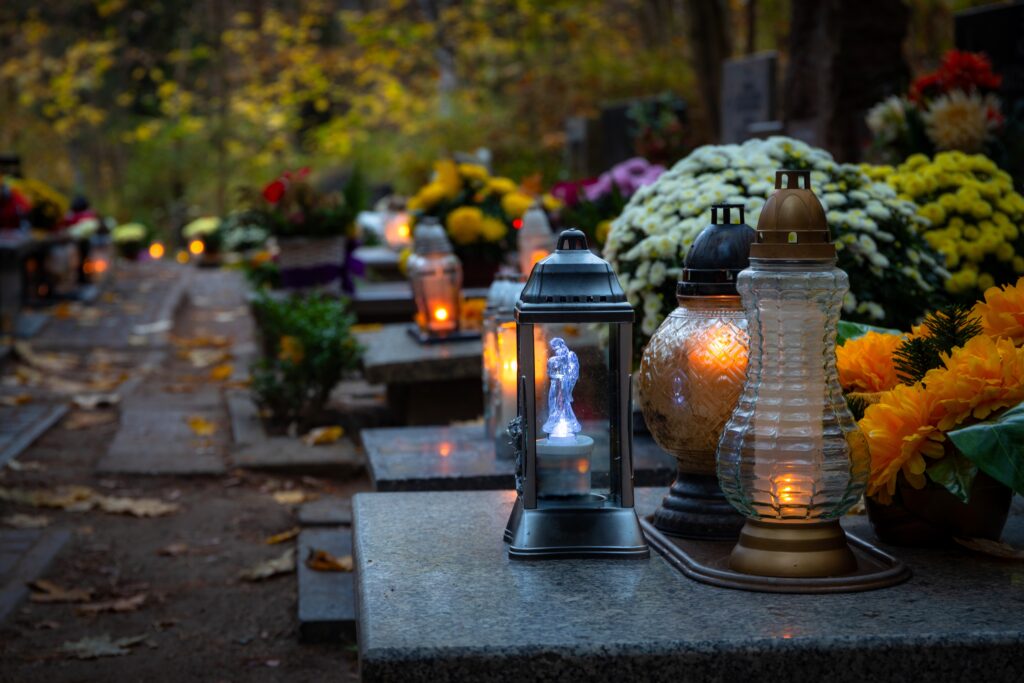
In today’s world, superstitions continue to fascinate and often thrive, despite modern advancements and a general move toward scientific reasoning. Interestingly, globalization has spread and transformed these beliefs, making them accessible to people from different backgrounds who find them both intriguing and strangely relatable.
Even with widespread education and technological development, superstitions still offer comfort to people, acting as rituals that give a sense of control over uncertain situations. This is especially true in global cities where diverse cultures intersect, bringing their unique superstitions along. For instance, tourists in Japan might adopt the avoidance of the number 4 out of respect for the local customs, while some people in Western countries may start saying “good morning” to magpies as a playful nod to British lore. The internet and social media have also popularized superstitions, creating a sort of virtual folklore that adds to the allure of these age-old beliefs.
Additionally, these superstitions often reflect universal concerns: the desire for health, love, prosperity, and protection. It’s this timeless relevance that helps them endure, reminding us that, no matter where we come from, superstitions offer a sense of connection to something larger than ourselves.
Why We Cling to the Bizarre—Superstitions as Cultural Windows
Superstitions may seem strange on the surface, yet they connect us to our history, values, and cultural identity. Despite being centuries old, these beliefs continue to thrive as symbolic gestures and cautionary tales, passed down through generations. They remind us that, regardless of scientific progress, the human desire for control and protection in the face of life’s uncertainties remains universal.
In exploring these superstitions from around the world, we gain insight not only into cultural diversity but also into shared human experiences. We’re all, in a way, united by these quirks—these seemingly odd habits that reflect our hopes and fears, our desire to bring good luck, and our wish to ward off misfortune. Perhaps superstitions, no matter how bizarre, are simply humanity’s way of saying: “Better safe than sorry.”
Ancient History
The Craziest Artifacts Found in Places You’d Never Expect
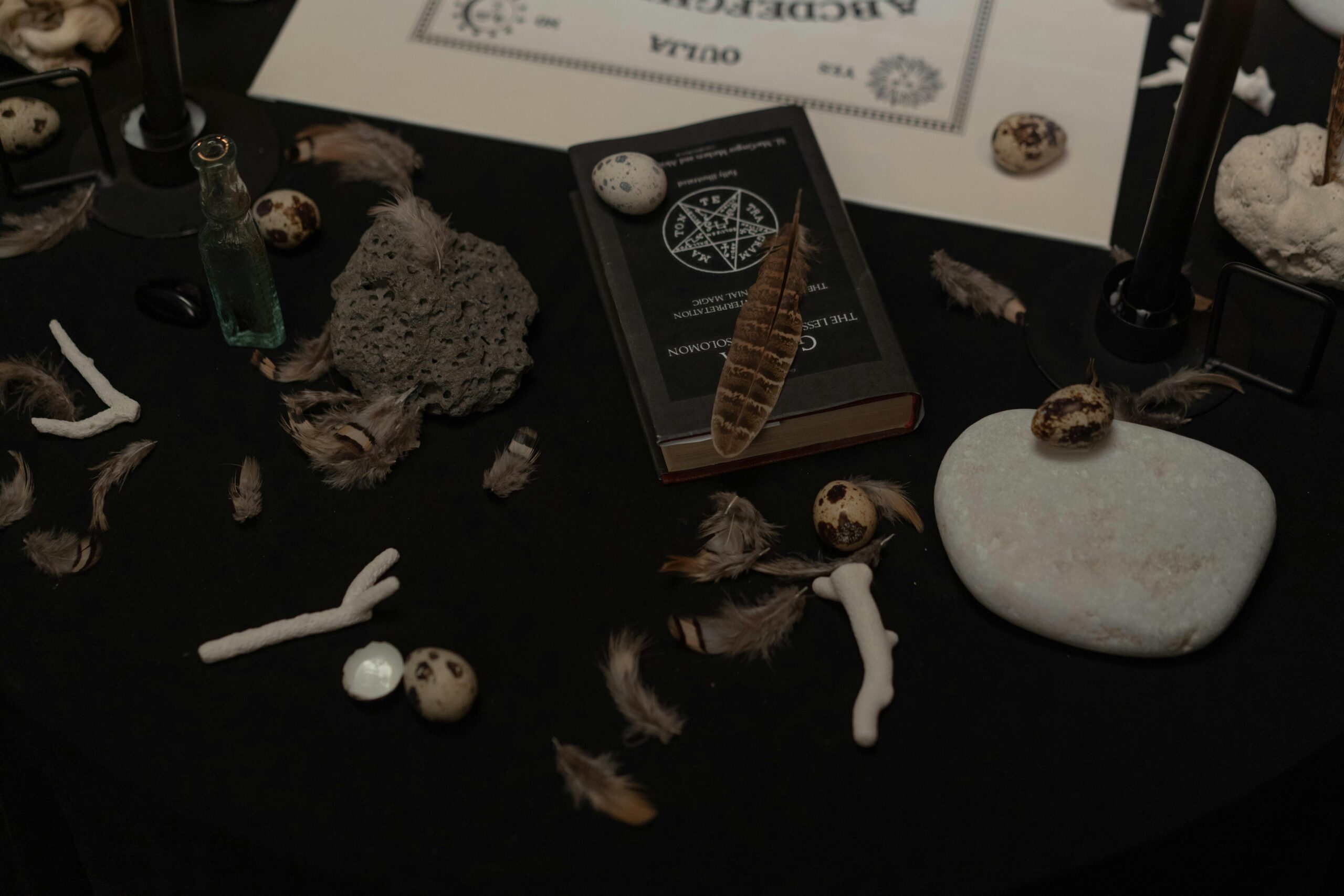
In every era, archaeologists and explorers have stumbled upon objects that defy what we think we know about history. These are artifacts that don’t quite fit, that seem almost otherworldly, either because of where they were found, their bizarre designs, or the technology they hint at. Sometimes, these artifacts are so advanced or unusual that they spark wild theories, from lost ancient civilizations to the possibility of extraterrestrial visitors.
This article dives into a handful of these unusual and mysterious artifacts. Each of them challenges the timeline of human development, and they’re all packed with enough intrigue to keep both historians and dreamers wondering what else might still be hidden, waiting to rewrite what we know about the past.
Ancient Mechanical Marvels
The ancient world is full of surprises, but some discoveries stand out because they seem so ahead of their time. Among them are two mysterious artifacts that have historians and scientists scratching their heads, wondering just how much ancient civilizations actually knew about technology and science.
The Antikythera Mechanism: An Ancient Greek Computer
In 1901, a group of divers off the coast of Greece stumbled upon something strange while exploring an old shipwreck. What they brought up looked like a lump of corroded bronze, covered in gears and pieces of metal. Today, we know it as the Antikythera Mechanism—a sort of ancient computer dating back over 2,000 years. This wasn’t just a random collection of gears; it was a carefully engineered device, built to track the movements of planets, predict eclipses, and maybe even follow the cycles of the Olympics. For a long time, historians didn’t think anything close to this level of technology existed until medieval times, over a thousand years later.
So how did the ancient Greeks manage to create something so advanced? Some people believe it’s a rare example of Greek genius at its peak, while others wonder if it’s evidence of knowledge that’s been lost over time—or maybe even something passed down from an earlier, advanced civilization. It’s a bit mind-boggling to think that people in ancient Greece might have had this kind of astronomical insight and mechanical skill. The Antikythera Mechanism is a reminder that our history might be hiding more advanced knowledge than we’ve ever imagined.
The Baghdad Battery: An Ancient Power Source?
Then there’s the “Baghdad Battery,” an artifact that archaeologists found near Baghdad in the 1930s. It’s a small clay jar with a copper cylinder inside, surrounding an iron rod. On its own, it might not look like much. But when someone thought to add an acidic liquid—like vinegar or grape juice—the jar produced a tiny electric charge! This discovery led people to wonder: did ancient Mesopotamians understand electricity? And if they did, what were they using it for?
One idea is that this little jar might have been used for electroplating, a process where a thin layer of metal coats an object. Maybe it helped ancient craftsmen cover items with gold or silver. Others think it might have been used in religious rituals, giving a small shock to create a sense of mystery or power. And, of course, there are wilder ideas too—maybe it’s a piece of lost technology from a civilization we don’t know about, or even a relic from visitors beyond Earth. Whatever the truth is, the Baghdad Battery reminds us that ancient people were experimenting with things in ways that still surprise us today.
Maps of Unknown Lands

Maps are like snapshots of what people knew about the world at a certain time. They tell us a lot about history, exploration, and what places were known—or unknown. But every now and then, a map surfaces that doesn’t quite fit, making us wonder if ancient civilizations had access to knowledge we’ve lost. One of the most famous examples of this is the mysterious Piri Reis Map.
The Piri Reis Map: A Cartographic Enigma
Back in 1513, an Ottoman admiral named Piri Reis drew up a map that’s still stumping people today. It shows the coastlines of Europe, North Africa, and even parts of South America with surprising detail and accuracy, especially considering the limited navigation tools available back then. But here’s where it gets really weird: some believe this map also shows the coast of Antarctica—a place that wasn’t officially “discovered” until more than 300 years later, in 1820. And if that wasn’t enough, the part of Antarctica it shows looks like it was drawn before it was covered in ice, suggesting it’s way older than anyone thought.
So, how did Piri Reis make this map? Some people think he copied it from ancient sources, maybe maps handed down from lost civilizations that had a pretty advanced understanding of the world. There are even theories that it’s proof of a prehistoric global society or, for the more adventurous thinkers, a sign of contact with extraterrestrials. Skeptics argue that this “Antarctica” could just be a mistake, a misinterpretation of South American coastlines. But whether it’s an error or a clue to something bigger, the Piri Reis Map keeps historians and dreamers coming back, wondering if our ancestors knew way more about our planet than we give them credit for.
Unusual Stone Constructions

Sometimes, the ancient world gives us stone creations that are almost too strange to believe. It’s not just that they’re impressive; they’re baffling, especially when we think about how ancient people pulled them off with basic tools. Here are two stone mysteries that still have people scratching their heads—and maybe wondering if our ancestors knew more than we think.
The Stone Spheres of Costa Rica: Mysterious Precision
In the 1930s, workers in Costa Rica’s Diquís Delta were clearing land when they stumbled on something strange: huge stone balls, some of them as small as bowling balls, others as big as cars. Now known as “Las Bolas” (literally, “The Balls”), these spheres were carved by the Diquís people hundreds of years ago. Here’s the weird part: they’re almost perfectly round. And it’s not like they had high-tech tools to get that precision. So how did they make them?
As for why these stones exist, there are plenty of theories but no solid answers. Some think they were just symbols of status or maybe territory markers. Others believe they had something to do with astronomy—maybe lined up with the stars or the sun in some way. And then there are the out-there ideas: maybe these stones were inspired by something beyond Earth. Whatever the truth is, these stone spheres show just how much skill—and mystery—ancient people put into their creations.
The Cochno Stone: A Prehistoric Map or Ritual Site?
In a quiet field near Glasgow, Scotland, there’s a massive slab of rock called the Cochno Stone. On the surface, it doesn’t look like much, but if you take a closer look, it’s covered in strange symbols—spirals, rings, and small carved “cups.” Dating back over 5,000 years, this stone is one of Europe’s largest pieces of ancient rock art. But no one knows exactly why it was carved or what it all means.
Some researchers think the Cochno Stone might be an ancient map, maybe showing stars or important places. Others believe it could’ve been part of rituals or ceremonies, with each carving having a special meaning, like symbols of nature or gods. And then there are theories that maybe it was a kind of code or even a message from a lost civilization. We may never know the answer, but the Cochno Stone is a fascinating reminder of the mysteries the ancient world left behind.
Mysterious Manuscripts and Codices
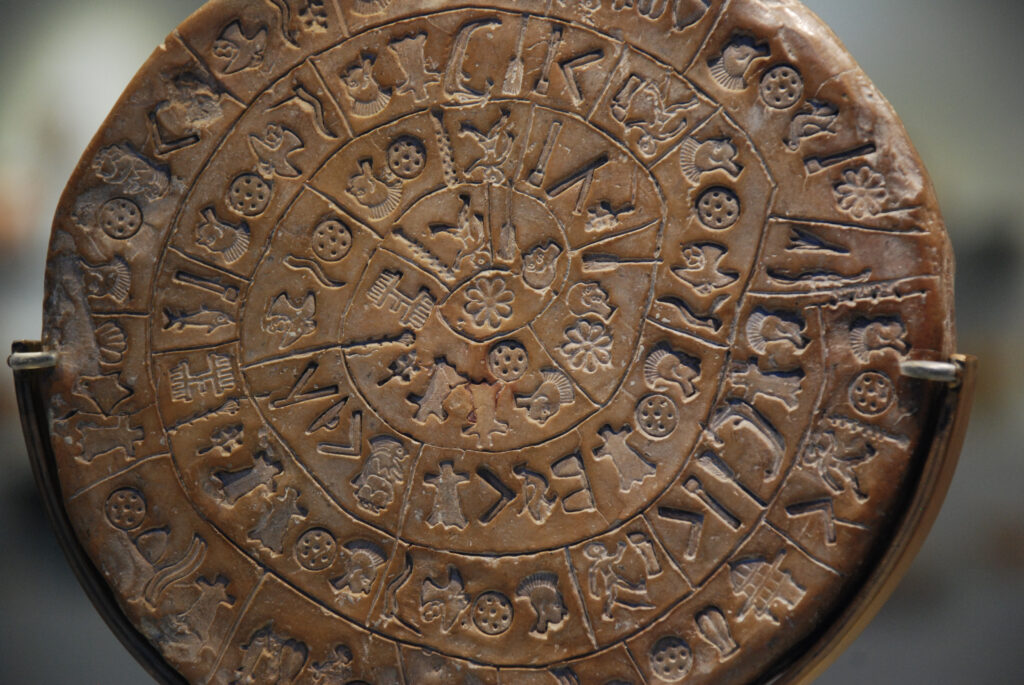
Some old books and manuscripts are so strange that they’re still keeping people up at night. Even with all the technology we have today, a few of these ancient texts refuse to give up their secrets. Here are two that have left experts totally stumped.
The Voynich Manuscript: An Unsolved Codex
Imagine finding a book filled with drawings of bizarre plants, star signs, and random scenes of people floating in pools, all written in a language no one’s ever seen before. That’s the Voynich Manuscript. Ever since a guy named Wilfrid Voynich bought it in 1912, it’s been one of the biggest puzzles out there. People have tried everything—code-breaking software, linguistic analysis, even AI—to figure it out, but so far, it’s like talking to a wall. Nothing makes sense.
Some say it might be an old medical guide or a book on plants, written in code to keep its secrets safe. Others think it could be a prank from the Middle Ages, just there to mess with us. And then there’s the idea that maybe it’s written in some lost language—or even that it’s from another world altogether. Whatever it is, the Voynich Manuscript has a lot of people wondering if it’s the real deal or just a massive practical joke from history.
The Phaistos Disc: A Minoan Mystery
In 1908, archaeologists digging around an ancient palace on Crete found this small clay disc covered in tiny stamped symbols arranged in a spiral. It’s known as the Phaistos Disc, and it’s one of the oldest “printed” items ever discovered. The disc comes from around 1700 BCE, but here’s the thing: we still don’t know what it says or even what language it’s in.
Some people think the Phaistos Disc might be a kind of calendar, a religious text, or even a record of some important event. Others have wilder ideas—maybe it’s a coded message or even a game. But since no one has found symbols like this anywhere else, we’re all left guessing. It’s like the world’s oldest puzzle, sitting there for centuries, waiting for someone to finally figure it out.
Out-of-Place Artifacts and Alien-Looking Objects
Every so often, archaeologists come across something that doesn’t seem to fit with the time or place where it was found. These artifacts leave us scratching our heads and wondering if maybe we’ve missed something big. Here are two that really throw a wrench into the historical timeline.
The Tecaxic-Calixtlahuaca Head: Roman Relic in Ancient Mexico?
In the 1930s, a small terracotta head was discovered in a burial site in Mexico, near the town of Tecaxic-Calixtlahuaca. At first glance, it might not seem too strange, but when experts examined it closely, they found something odd—it looked almost Roman. Tests dated the head back to about 200 CE, a time when Rome was at its peak… but on the other side of the world! So how did this little Roman-looking head end up buried in ancient Mexico?
There are a few theories, of course. Some people think it may have been brought to Mexico through ancient trade routes or even by shipwreck survivors from far-off lands. Others think it could have been placed there later, possibly as a hoax. But if it really is an authentic Roman artifact, it suggests that people may have been crossing the oceans long before we thought they did.
The Maine Penny: Viking Coin in New England
In the 1950s, an unusual coin was found at a Native American archaeological site in Maine. This wasn’t just any coin—it was a Viking silver penny from around 1000 CE. How on Earth did a Viking coin end up buried in New England? At the time, the only confirmed Viking settlement in North America was at L’Anse aux Meadows in Newfoundland, far from Maine.
Some historians think the coin might have reached Maine through trade routes between different Native American tribes. Others wonder if the Vikings actually traveled much farther down the coast than we thought. Either way, the Maine Penny adds a bit of mystery to the story of Vikings in North America, leaving open the possibility that there’s more to the tale than we’ve uncovered so far.
Echoes of the Ancient Mysteries
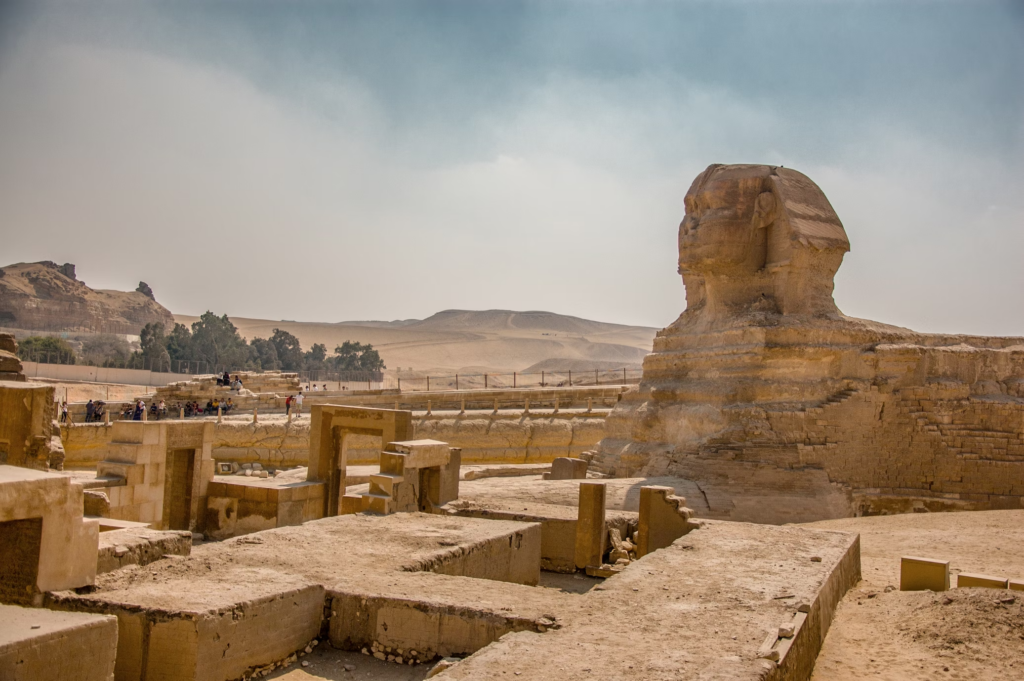
The more we dig into history, the more it surprises us. Some of these artifacts are like little question marks left behind by ancient people, making us wonder what they knew that we might have forgotten. Whether it’s the crazy mechanics of the Antikythera Mechanism, the mystery language in the Voynich Manuscript, or that Viking ring with Arabic script, these finds show us that history isn’t as cut-and-dry as we think.
Maybe these artifacts hint at connections between ancient people that we didn’t know existed, or maybe they point to knowledge that somehow slipped through the cracks of time. Whatever the truth, it’s hard not to get pulled in by the mystery of it all. It’s kind of amazing to think there could be even more strange, unexplained stuff out there, buried and waiting to change what we know.
In the end, these ancient puzzles are a reminder that history is more than just facts and dates—it’s a story that’s still being told. And who knows? The next big discovery might be just around the corner, ready to shake things up all over again.
Consciousness
Solstice Strength, Courage & Blessings

Solstice blessings to ALL. We find ourselves moving more and more into a new way of being, and this Solstice is offering up to us a time to renew ourselves as we fill ourselves up with more strength and courage to embrace all that is longing to come into our lives. It is also a time to honor and revitalize the Sacred Masculine within all of us, and to balance and nurture it with our Divine Feminine presence. We all have this need to balance the feminine and masculine within, and now is a great time to utilize this ability.
No matter what was, and what is before us, we stay strong and centered upon our trust in the greater plan that always has our highest good at heart. Trust and faith in ourselves, others, and the greater plan, are important.
Wednesday, December 21st, marks the Solstice celebration for all people (winter solstice in the Northern Hemisphere and Summer Solstice in the Southern Hemisphere). How can we bless ourselves, our lives, and that of others even more this season? How can we heal more, and help others heal and forgive during this time?

“Faith is being sure of what we hope for, and certain of what we do not see.” -Hebrews 11:1
We can begin by acknowledging the challenges that have come forth in our lives. On this day, we can honor the anchoring in of more light as we too can honor the places where darkness has come forth. This has been a challenging time for many, and when we begin to accept and embrace what has been, we can then fully embrace the wealth of healing and love that is calling us.
The dark moments have been here to teach us, to bring things out from under the shadows, to help us grow and heal by revealing that which has been hidden from us. This is often referred to as our shadow side, and it comes forth to help us transform. It can bring forth such deep hurt and pain, but through that it also gives us an opportunity to heal something and move forth into more light and love.
Moments, that feel so very beyond our control, are ultimately here to bring us together and renew our faith.
The moments of light, and there are so many moments of light, are here to illuminate that which shines so bright within and without. We feel it, and others feel it too. It is us in our most beautiful state and nature, and it is the world as we most love to see and cherish it. No matter what happens in our personal lives or in the world, let’s be reminded of the strength of the light.

We can set an intention today, and everyday for what we desire to bring into our lives. When we write down this intention, and hold it dear to our hearts, it begins to bloom. First, we feel it inside our hearts, then we see it start to take shape and form in our outer world. What kind of intention are you ready to set for your next step in life as you move forward into greater personal power? Are you ready to listen to your heart, and follow your dreams?
“When your intention is clear, so is the way.” -Alan Cohen
We can commit to allowing the challenges of our lives to bring forth all that we need to heal. We can allow it, and let it come forth with compassion. We can see it as our teacher, and we can bless it for it is blessing us with a chance to move through yet another hidden pain that wants to be healed in order to enlighten us more.
Are you ready? I am ready. So many of us are ready. Let’s anchor in more light and healing this season. Let’s share our light with the world, and when it gets painful, let’s remember our true nature and send deep love and healing to our hearts and the world. This may be the turning point, that brings balance back into our lives. What are you ready to transition into?

“Promise me you’ll always remember:
You are braver than you believe, stronger than you seem, and smarter than you think.”
-Christopher Robin to Winnie-the-Pooh (A. A. Milne)
We may be faced with challenges, but with love, compassion and kindness we can survive in strength. It is time to bless and release all fear, doubt, judgment, hurt, worry, and pain. Only allow love and inspiration to bless your body, mind and spirit.
Let’s affirm:

You are healing. You are healed.
We are healing. We are healed.
- Winter Solstice Celebration, Mary Kate Hagan, The Furrow, Vol. 61, No. 3 (March 2010), pp. 185-188
- The Shadow Effect: Illuminating the Hidden Power of Your True Self, by Deepak Chopra, Debbie Ford, and Marianne Williamson
- The Power Is Within You, by Louise L. Hay
Namaste.
Ancient History
Five Ancient Rituals to Maximize The Energetic Power of Halloween

Throughout history, Halloween has signified more than just a corporate holiday celebrated by children eating candy and adults partying in silly/slutty costumes. Across ancient cultures around the globe including Celtic, Roman, Indigenous Americans, and more, the night of October 31st into November 1st has been known as the day when it is the most possible to make contact with the spirit realm / the deceased. This idea of the “thinning of the veils” stems back thousands of years across numerous ceremonial traditions, such as All Hallows Eve, Samhain and Dia de Los Muertes.
In this week’s episode of Lucid Planet Radio, I learned all about the origins of numerous Halloween traditions (think: Jack-O-Lanterns, Costumes, Ghosts, Candy, Bobbing for Apples and more) with Judika Illes, one of the foremost authorities on witchcraft, the magical arts and the occult. We also discussed what it really means to be a ‘witch’ and practice ‘magic,’ including spell casting and divination.
Whether you believe in ‘magic’ or not, you can still create and participate in your own personal rituals to maximize the power of this very special night. According to Judika, the stroke of midnight on the night of Halloween is the “witching moment” of the year where any spell, wish, card draw, divination, or intention will be magnified.
Essentially, this is an excellent time to search for answers and spur on the transformation in your life. On this yearly night of power the phone-line to other realms, our deceased loved ones, our spiritual guides and our highest self is OPEN and taking callers! So, get all of your candy and trick-or-treating out the way before midnight and treat yourself to powerful ritual at midnight.
1. A Taste of Romance
I’ve always wondered why Halloween can have such a mysterious, sexy vibe, why it spurs legions of people to wear provocative (aka: slutty!) costumes, myself included. I was shocked to find out from Judika that for generations, Halloween was actually considered to be a ROMANTIC holiday, akin to Valentine’s day! This was also a potent time to cast romantic spells. Old Halloween postcards like this one from the early 20th century seem to confirm this perspective on Halloween. 
According to Victorian lore, to find your true love, stand naked in a dark room facing away from a mirror, holding a candle. Then, on the stroke of midnight, legend has it that when you look over your shoulder at the mirror, you will see the face of your true love reflected back at you! Note: Doing this at the club probably won’t work!
2. Meet me at the Crossroads
There is also an ancient Pagan Halloween ritual for Divination, or, finding answers to pressing questions in your life. Find a crossroads, which is a place where two streets intersect and is thought to have a concentration of power. Think about the important life question and the answer you seek- Judika explains that the most specific questions will beget the most accurate and helpful answers. At the stroke of midnight, listen to the first words or phrases that you hear, and these will be the answer to your question.
Alternatively, if you do not have access to a crossroads or prefer to stay indoors, Judika recommends using a radio (or television if you have no radio) and playing with the dial until the stroke of midnight. When midnight occurs, the first words you were on that radio will give you an answer.
Judika also wanted me to remind our listeners that nothing is ever set in stone- If you hear good news, that is great, but if you hear bad or ominous news, this does not necessarily mean that something bad will happen, but it is a warning. We always have free will and the ability to change the course of our lives.
3. Moon Bath
After the new moon in Scorpio on Oct 30th, the moon on Oct 31st will be small, but it will be waxing (meaning that it is in a growth stage). During the waxing moon, it is advisable to ask the universe for things that you wish to GROW (such as money, love, hair, etc). Judika explains that simply standing under the moon at the stroke of midnight on Halloween will help raise your psychic vibration, and that this is an excellent time to empower any wish for something you hope to build or grow in the coming months.
The moonlight on Halloween also offers a wonderful opportunity to cleanse and re-charge your crystals. Judika recommends putting your crystals in a bowl of water (so long as water does not damage them- for example, do not put Selenite in water!) and leaving them outside during this time. Then you can drink the water, or anoint your body with it. You can also bottle this moon water and drink it later when you feel you need a re-charge. If you are a Tarot or Oracle card reader, pulling cars under the moonlight at the stroke of midnight will also be especially powerful.
4. A Bite of Forbidden Fruit
Given the rich symbolism of the apple (both in terms of the forbidden apple of knowledge, and the poisoned apple of snow white) it is perhaps not surprising to learn that the apple also takes roots in the ancient traditions of Halloween. In the Pagan tradition, the apple has traditionally been a symbol love and of ‘knowing.’ In Roman times, Halloween was the celebration of the goddess Pomona, the Apple Queen. This is where we derive our traditions like bobbing for apples, which was once part of an old, sacred divination ceremony.
Judika explains that we can integrate these old rituals by making a wish on Halloween night while holding an apple in our hands. Focus on what you want to transpire: Be it health, job success, clearing your debts, finding love, or bringing peace or reconciliation, and so on. Visualize this wish and allow yourself to feel happy and calm. Then at the stroke of midnight on Halloween, take a bite of the apple!
5. Spirit Whispering
If you believe in the ability to communicate with spirit guides or deceased loved ones, the ‘thinning of the veil’ on Halloween offers the perfect opportunity to do this. When asked what is necessary to reach out to the other side, Judika explains that RESPECT and GOOD MANNERS are paramount. Holding gratitude and humility in your heart is key, as well as eschewing fear. If you are holding a fearful vibration, you can attract beings that feed off of fear, rather than love. So if you are going to do this, please be sure that you are coming from a place of respect and love.
Judika explains that no special spell is necessary to do this. First, ask for the type of being you are looking to connect with (such as your deceased loved one, or a type of spirit guide). Using specific, non-general language, visualize the questions you have in your mind’s eye, or write them down. Then, create a small offering for the spirit(s) in question. Judika recommends using a bowl of water with a large surface area (this can absolutely be moon water or crystal water as discussed earlier) as well as a food offering for the spirit that you will not consume. If you knew them, then offer something they liked during life (such as a favorite candy or tobacco). If you did not know them, think of something you would appreciate as an offering of food. Crystals are appealing to spirits and can also be incorporated into this ritual.
Whatever ritual you decide to participate in, just remember to keep an open heart and to express your desires in a specific and clear way. For much more, listen to my interview with Judika and check out her numerous books on witchcraft and the occult!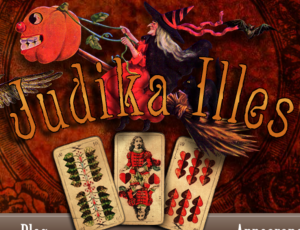
And…If you see me naked at a crossroads, biting an apple with a mirror and a bowl of crystal moon water, just know I will be wishing you a very Happy Halloween!!!!
Ancient History
What You Need to Know About the 5 Trees of Paradise Legend

The tree of life is mentioned in many different ancient and modern cultures, religions and spiritual practices. The world tree or tree of life is a symbol of manifestation in many cultures as it holds the gateway to knowledge about the true nature of reality and oneself.
In Celtic cultures, the tree of life has many symbols of connection including the old ‘as above, so below’ idea. This may represent the symbolic nature of what happens on a small scale will ripple out affecting life on a larger scale as well.
According to the Gnostic view, the tree of life has a strong connection to the serpent or kundalini awaking which they call the nass or “moist essence of the universe”. Whatever you call it essentially there is an energy coiled up at the base of the spine that will travel up the spine toward the brain igniting all of the energy pathways or chakras of the body on its way.
 This process fully awakens your soul connecting your physical reality to the metaphysical existence and on an evolutionary level pulls us up into higher dimensions of perception, unlocks our intuitive psychic abilities and increases our level of awareness.
This process fully awakens your soul connecting your physical reality to the metaphysical existence and on an evolutionary level pulls us up into higher dimensions of perception, unlocks our intuitive psychic abilities and increases our level of awareness.
The tree of life is the structured symbolic path that one must travel through in order to pass through the 3 worlds talked about in Shamanic practice on your way to eternal life and heaven on earth. The pathway is designed to create a powerful connection between the physical and the non-physical realm as well as connecting the lower dimensions with the higher dimensions.
If you are a seeker of truth and curious about the path of life I recommend that you explore this concept from many different angles and follow the one that resonates most with your soul.
The Coptic Gospel of Thomas
There are some lost and discarded books in history that were omitted or hidden during the writing of our modern bible. Whether or not you believe in the bible some of these teachings are interesting and valuable in our world today.
 For example, the Coptic Gospel of Thomas contain the secret teaching of Jesus (Yeshua) and were only found a little over a century ago int he deserts of Egypt. According to that text Jesus told his disciples:
For example, the Coptic Gospel of Thomas contain the secret teaching of Jesus (Yeshua) and were only found a little over a century ago int he deserts of Egypt. According to that text Jesus told his disciples:
“For you have five trees in Paradise which do not change, either in summer or in winter, and their leaves do not fall. He who knows them shall not taste of death”
So Jesus referred to 5 trees in Paradise that if you came to know them then you wouldn’t taste of death. He also had other teachings that may help shine a light on what we need to do to know these trees better.
“Blessed is he who was before he came into being,”
This kind of statement may sound a bit confusing, but it is actually very similar to many teachings from various cultures and refers to the benefit of being self-aware. When you know your true nature before the ego is even developed you are more able to travel the symbolic path that Jesus and other spiritual leaders spoke of.
When we are clouded by our ego and lacking in awareness we distort the teachings and end up confused or frustrated. Many ancient teachers spoke at a higher level of awareness and in a symbolic nature that can be confusing to many.
“If you…listen…, these stones will minister to you,”
For example, this statement may mean ‘listening’ to your true self which would allow you to observe the internal and external connections we have to the physical reality around us.
The word tree is a creative and manifesting symbol in the Christian and Jewish sacred texts and often refer to taking or producing fruits. Fruit is a very symbolic way to describe the end product or passing forward of nourishment, knowledge, and seeds to carry on the next generation.
5 Parts of the Mind
 It is possible that Jesus was talking about mastering the 5 sides of our mind. In the 27th chapter of the Acts of Thomas during a special anointing ceremony, Thomas says “Come, elder of the five members of mind, communicate with these young men;” and according to Theodore bar Khoni the 5 minds are the equivalent to mad’a (reason), hauna (sanity), re’yana (mindfulness), tar’itha (intention), and mahshebhatha (imagination).
It is possible that Jesus was talking about mastering the 5 sides of our mind. In the 27th chapter of the Acts of Thomas during a special anointing ceremony, Thomas says “Come, elder of the five members of mind, communicate with these young men;” and according to Theodore bar Khoni the 5 minds are the equivalent to mad’a (reason), hauna (sanity), re’yana (mindfulness), tar’itha (intention), and mahshebhatha (imagination).
These 5 minds are said to help you manifest the Father of Greatness which may help us see more into what the 5 trees represent. They would show us 5 ways to perceive the real reality.
Marvin Meyer writes that:
“The ‘five trees in paradise’ are mentioned frequently in gnostic texts, ordinarily without explanation or elaboration. In Manichaean Psalm Book 161,17-29, it is said that various features of life and faith are put together in groups of five. This section opens with the statement, ‘For [five] are the trees that are in paradise [. . .] in summer and winter.’ On the trees in paradise according to Genesis, see Genesis 2:9.” (The Gospel of Thomas: The Hidden Sayings of Jesus, pp. 77–78)
5 Senses Meaning
Another possible interpretation is that the 5 trees are connected with our 5 senses. In mindfulness, which Jesus mentions above, to increase your awareness you need to become present in your 5 senses and experience the real reality.
 According to the Naassenes, the paradise spoken of is the human head. They suggest that the ‘5 trees’ may be referring to our 5 senses which help us create a perceivable inner world. This inner world creates the basis for our belief system and perception of reality. This knowledge would be what we need in order to find enlightenment and return to unity/paradise.
According to the Naassenes, the paradise spoken of is the human head. They suggest that the ‘5 trees’ may be referring to our 5 senses which help us create a perceivable inner world. This inner world creates the basis for our belief system and perception of reality. This knowledge would be what we need in order to find enlightenment and return to unity/paradise.
The only block to this theory is that the 5 senses are often connected with the lower levels of egoism and can lead to misinterpretation. When we aren’t reading our senses right we can get lost in our emotions and create a bigger wedge between ourselves and the divine.
Hindu Parallel
Hindu culture also talks about 5 trees in their tradition too. They are known as Mandara, Parikata, Samtanaka, Haricandana and Kalpa vrksa.
There is a theory that is related to in The Gospel of Thomas that talks about Jesus traveling to India during the “missing years” of his life between the ages of 12 and 30 7 where he studied and learned the enlightened ways of meditation. This may be the 5 trees he was referring to.
Kabbalah Teachings
In the Jewish tradition, the 5 trees could be interpreted as the Five Worlds known as Asiyah, Yetzirah, Beriah, Atzilut & Adam Kadmon. These 5 worlds refer to 5-dimensional levels of the soul’s progress towards unity, oneness, and the creator.
According to the secret Science of Kabbalah how to accomplish this is up to each person’s ‘desire to receive’. If you wish to reach a state of unity with pure altruism you will then become the pure creator and experience the divine.
Another teaching that is related to this concept is the “reality as a mirror of desire”. This may be referring to the ego mirror that we bump into on our way to true awareness. In this case, the pure desire equals perfect results in manifesting divinity, whereas impure desire would equal negative results. They also refer to the tree as a symbol of a “productive” paradise.
 When you combine the Judaico-Biblical concepts most similar to the 5 tree and 5 world concept you end up with the five Partsufim also known as 5 soul levels: Nefesh, Ruah, Neshama, Haya and Yehida.
When you combine the Judaico-Biblical concepts most similar to the 5 tree and 5 world concept you end up with the five Partsufim also known as 5 soul levels: Nefesh, Ruah, Neshama, Haya and Yehida.
All of the teachings seem to point to one profound concept which is where the soul or mind uses the 5 senses to travel through the 5 worlds, minds or dimensional levels towards the same goal: divine unity of consciousness.
What you need to know about the 5 Tree Path.
1.The Tree of Life (The World Tree)
Often this tree is represented as a large bodhi, oak or ash tree that is found at the center of the earth’s 3 worlds. This tree is used as a passageway between 3 dimensions or consciousness levels that are on earth.
The tree of the world symbolizes the first of the 5 senses, vision, to those walking the path. This stage is accompanied by visions, and prophetic dreams of the future.
2. The Second Tree of Life
This tree is often expressed as a large pink coral where the bottom of the tree is copper or brass. The tree is used as a portal into the 5th dimension. People from our dimension see this as an open pathway or portal opening with no door.
This level of the 5th dimension is the where the soul traveler attains the ability of higher hearing and will have bouts of telepathic communication.
3. The Third Tree of Life
The 3rd tree is for the re-connecting and clearing of the nervous system. It is often symbolically represented as a large flowing tree like a weeping willow. It represents your memories of life before this incarnation and pushes you forward in you path of consciousness.
The third tree is symbolically connected with the sense of smell and is often accompanied by the smell of flowers in a walking state with no apparent source.
4. The Fourth Tree of Life
Once a soul traveler reaches the 4th tree the seeker will experience what is known as the elixir or life or immortality. This is also referred to as the nectar of the gods or Ambrosia. It is often described as a sweet tasting honey like substance that is produced in the third eye and drips down the back of the throat.
This drip gives the person a sense of timelessness while restoring physical health. Often times this drip is related to the bodies own ability to produce DMT and this leaves the person in a state where they don’t seem to need food or rest as well.
As you may have guessed already this tree is connected with the sense of taste.
5. The Fifth Tree of Life
This tree is often only considered a legend or a myth because this tree of life is the piercing connection where the traveler becomes connected metaphysically and physically to the “gods above”.
The 5th tree is connected with the sense of touch and the rest of the effects are with unknown or impossible to describe in the form of written word.
Each tree symbolizes a part of our alchemical journey physically and mentally as we get closer to our true self, oneness, or the divine source of the universe. There are many theories out there that talk about how this reality is a dream and perhaps the path of the 5 trees is the secret we have been looking for to completely wake up.
Other Sources-
Ancient History
The “Forbidden” Secrets of the Church

Religion is a very powerful system to use for shaping cultures and societies. Throughout human history, religion has played an important role for helping the human race evolve. Unfortunately, most of the knowledge in religion has been heavily distorted. To make matters worse, the enlightening and empowering knowledge in religion is encoded to prevent us from knowing the “forbidden” secrets of our history.
In the right hands, religion can be used to empower the people. However, in the wrong hands, it can be used to enslave the minds of the people. The unwanted truth is that the system of religion has fallen into the hands of certain power addict and controlling people.
Religion is one of the most powerful tools to use for enslaving our minds and souls, because it manipulates us to think that we are weak and powerless, and need to rely on a savior to save us. This causes us to think like slaves, making us easier to be controlled by the Dark Forces.
The “forbidden” secrets of the Church
Before I expose some “forbidden” secrets of the Church, I want to make it clear to you that my intention is not to offend anyone. I am only doing this to show you the facts. It is up to you to accept them as truths.
I also want you to be aware that the reason why I am exposing the secrets of the Church is because I am more knowledgeable in knowing how the Church operates than other religious systems. Plus, I used to go to a Baptist church when I was a kid. No matter what religion it is, all religions have their own dirty secrets.
To understand how the Church operates, you need to know its history. The following content in block quotation will give you a very short history of the Church. It is extracted from my third seminar titled Ascension and the “Forbidden” Secrets of Religion.
For you to understand how the church system works, you need to know its history. According to some religion scholars, the early churches were Pagan churches, which were churches that worship Pagan gods. In general, Paganism is a religion that worships many gods or goddesses and tends to be nature oriented.
During the time of the Roman Empire, Christianity was a minority religion, but it soon became popular and spread throughout Rome. This religious movement became so strong that it threatened the Roman religion, which was heavily based on Polytheism and Paganism.
As the Christian movement grew, it caused a lot of conflicts between the Christian and Roman religion, so Emperor Constantine ordered that the basic principles of the Roman religion and the Christian religion be merged together into one religion.
The official unification of these two religions occurred at the Council of Nicaea, which resulted in the birth of the Holy Roman Church. This is why there is a lot of Pagan beliefs in Christianity.
For example, Christmas and Easter are Pagan holidays. Most Christians do not know this because the Pagan beliefs and stories in Christianity are encoded to prevent Christians from knowing that their religion is filled with Pagan ideologies.
The evidence showing that Christmas is a Pagan holiday
To find some evidence showing that Christmas is a Pagan holiday, you need to know the origin of the word “Christmas.” Part of the word “Christmas” originated from a medieval custom of the Roman Church called Mass, which was celebrated at midnight on the eve of December 25. Put the word “Christ” and “Mass” together and you get “Christ-Mass” or “Christmas.”
The person named Jesus in the Bible is not a person with a body made of flesh and blood; instead it is just a name of a character. In the Bible, Jesus is often used to represent the sun that rises in the East and sets in the West. In other words, Jesus is the personification of the sun. Without the sun, we can not survive because we need the energy (sunlight) of the sun to keep us warm and grow food. This is why Jesus, which is the personification of the sun, is our savior
Here are some quotes from the King James version of the Bible that give us some clues as to why Jesus represents the sun:
Then Jesus spoke to them again, saying, “I am the light of the world. He who follows Me shall not walk in darkness, but have the light of life.” (John 8:12)
As long as I am in the world, I am the light of the world. (John 9:5)
Then they will see the Son of Man coming in the clouds with great power and glory. (Mark 13:26)
Then Jesus came out, wearing the crown of thorns and the purple robe. (John 19:5)
When you hear people say that Jesus is the “light of the world,” what they are actually talking about is the sun. This is why the Bible talks about Jesus “coming in the clouds” and wearing the “crown of thorns.” The thorns represent the rays of the sun. Once you know this, you will know why Jesus (the sun) is our savior and the light of the world.
Here is another excerpt from my third seminar titled Ascension and the Forbidden Secrets of Religion. The information in this excerpt will show you more evidence that Jesus is the personification of the sun.
Certain branches of Christianity like to teach their followers that Jesus was born on the 25th of December. This religious story of Jesus being born on the 25th of December is a metaphor for the “birth” of the sun.
As the winter solstice approaches from the Northern hemisphere, the days become shorter and shorter until it reaches the shortest day of the year, which occurs on December 21. On the day after December 21, which is December 22, the sun stops moving south for three days. Because of this event, it was said that the sun “died” for three days.
On December 25, the sun moves one degree north; therefore, it was said that the sun died for three days and was resurrected on December 25. This one degree movement of the sun is very subtle but can be measured using very sensitive equipment. This movement of the sun is one of the core meanings of Christmas, which is a holiday for worshiping the “resurrection” of the sun.
Once you decoded the hidden meanings of the story of Jesus and Christmas, you will know that December 25 or Christmas has nothing to do with a man named Jesus Christ. Instead, it has to do with celebrating the sun being born again as it moves one degree north.
Why Christians go to church on Sunday
The evidence that I use to show you the connection between Jesus and the sun in this article is only a small piece of the countless stacks of evidence, so if you think this is just a coincidence, you are going to be experiencing a lot of grief someday. Before ending this article, I would like to tell you one more “forbidden” secrets of the Church.
By now you should know that Jesus is often used to represent the sun. In general, most religions consider the sun as the savior of humanity, which is why many religious ceremonies and practices are done on Sunday.
If you separate the word “Sunday” into two words, you get “sun-day,” which means the “day of the sun.” It is right in your face! This is why Christians go to church on Sunday, so that they can worship the sun, the light of the world.
If you want to learn more “forbidden” secrets of religion, download or view the PDF file of my third seminar titled Ascension and the “Forbidden” Secrets of Religion.
About the author
P.L. Chang is the author and founder of EnergyFanatics.com and OmniThought.org, two informative blogs dedicated to exploring esoteric information about energy, health, conscious living, spiritual science, conspiracy, and exotic “free energy” technology. He is also the author of two books titled Staradigm: A Blueprint for Spiritual Growth, Happiness, Success and Well-Being and 40 Enlightening Tips to Increase and Balance Your Energy.
Ancient History
Fascinating Evidence Shows Why Water Fasting Could Be One Of The Healthiest Things You Can Do

**Please be advised that you should properly research how to fast if it’s something you are considering. This is just a tidbit of information that’s out there. If you have pre-existing health conditions, fasting may not be right for you. Make sure and do your research before embarking on something like this.
Fasting is the process of abstaining from food (and drink in some cases) for extended periods of time. It’s a practice that dates back thousands of years, utilized by various cultures around the world throughout human history for multiple purposes. These reasons include both health and spiritual reasons, which will be touched upon later in this article.
“Fasting is the first principle of medicine; fast and see the strength of the spirit reveal itself.” – Rumi
Today, fasting is considered to be taking place if you don’t eat for a period of at least 8-12 hours. So technically, most of us are participating in a period of fasting every night when we sleep. In the morning, we break our fast, this is where the term breakfast comes from. Animals are constantly fasting, especially when they are sick. In fact, humans are the only animals who eat when they are sick despite their body telling them not to do so.
“Everyone has a doctor in him; we just have to help him in his work. The natural healing force within each one of us is the greatest force in getting well. …to eat when you are sick, is to feed your sickness.” – Hippocrates
Contrary to popular belief, fasting isn’t dangerous or unhealthy if it’s done properly, it’s actually healthy and beneficial.
A Brief Summary Of What Happens To Your Body When You Fast
When you fast, the body is deprived of its normal source of energy, food, by turning it into glucose. The liver stores lots of sugar, in a form called glycogen, which is used for energy when the body isn’t taking in any of the food. Most of this energy source is depleted within the first 24 hours of fasting.
After this, the body switches into a state known as ketosis, which uses the body’s fatty acids as fuel in replacement of the depleted glucose levels. This change usually begins on the second day, most likely ending on the third. What happens here is that the body converts glycerol, which is available in the body’s fat stores, into glucose for energy -but it’s still not enough. The body gets the rest of its energy from breaking down the amino acids in muscle tissue, which are used by the liver to make more glucose for energy.
After this process, ketone production is sufficient enough to provide almost all of the energy the body needs, and the body begins to conserve large amounts of protein. The body is capable of preserving this protein to protect muscle tissue and vital organs from damage during long periods of food deprivation. After prolonged fasts of more than a week, the body starts seeking out non-body protein sources of fuel, which include nonessential cellular masses like degenerative tissues, bacteria, viruses or anything else in the body that can be used for fuel.
The conservation of the body’s protein is believed by many to be an evolutionary development that exists to protect muscle tissue and vital organs from damage during periods of insufficient food availability.
When you fast, just like when you sleep, the body is focused on the removal of toxins and the regeneration of damaged tissue.
What Modern Day Science Tells Us About Fasting
The benefits of fasting have been outlined in numerous scientific studies. Studies show that short term fasting can extend your life span, boost immunity and regenerate stem cells. The list goes on and on.
One of the most recent studies published on the subject was in June of this year, in the Journal Cell Stem Cell. It found that fasting 2-4 days at a time can actually cause a reduction in white blood cells. This means that fasting kills off old and damaged immune cells, and when the body rebounds it uses stem cells to create brand new, completely healthy cells. (1)
“Fasting is the greatest remedy, the physician within.”- Philippus Paracelsus, one of the three fathers of Western medicine
The study was actually conducted using human clinical trials on patients who were receiving chemotherapy, where fasting was effective in fighting cancer.
“During each cycle of fasting, this depletion of white blood cells induces changes that trigger stem cell-based regeneration of new immune system cells. Prolonged fasting also lowered levels of IGF-1, a growth-factor hormone that has been linked to aging, tumor progression and cancer risk.” (1)
“Chemotherapy causes significant collateral damage to the immune system. The results of this study suggest that fasting may mitigate some of the harmful effects of chemotherapy.”(1) – Co-Author Tanya Dorff
“We could not predict that prolonged fasting would have such a remarkable effect in promoting stem cell-based regeneration of the heatopoietic system. When you starve, the system tries to save energy, and one of the things it can do to save energy is to recycle a lot of the immune cells that are not needed, especially those that may be damaged. What we started noticing in both our human work and animal work is that the white blood cell count goes down with prolonged fasting. Then when you re-feed, the blood cells come back. ”(1) – Valter Longo, corresponding author
A scientific review of multiple scientific studies regarding fasting was published in The American Journal of Clinical Nutrition in 2007. It examined a multitude of human and animal studies, and determined that fasting is an effective way to reduce the risk of cardiovascular disease and cancer. It also showed significant potential in treating diabetes. (2)
The study concluded that fasting:
“May effectively modulate metabolic and functional risk factors, thereby preventing or delaying the future occurrence of common chronic diseases.” (2)
Scientists at the National Institute on Aging, led by Mark Mattson, a professor at the school of medicine has published several papers that discuss how fasting twice a week could significantly lower the the risk of developing both Parkinson’s and Alzheimer’s disease. (3)
He explains how fasting stimulates two messaging chemicals that operate at the cellular level and are key to the growth of brain cells in both animals and humans. The shock of fasting leads the brain to create new brain cells, neurons are forced to grow and the brain becomes more resistant to protein plaques that are seen in cases of Alzheimer’s, or the damage created by Parkinson’s.
“Dietary changes have long been known to have an effect on the brain. Children who suffer from epileptic seizures have fewer of them when placed on caloric restriction or fasts. It is believed that fasting helps kick-start protective measures that help counteract the overexcited signals that epileptic brains often exhibit. (Some children with epilepsy have also benefited from a specific high-fat, low-carbohydrate diet) Normal brains, when overfed, can experience another kind of uncontrolled excitation, impairing the brain’s function, Mattson and another researcher reported in January in the journal Nature Reviews Neuroscience.” (3)
Scientists are continuing to uncover evidence that short term fasting could achieve a number of health benefits. Despite this evidence, current medical opinion remains unchanged, because there are many human studies that indicate a diet of at least 2000 calories a day is the best option.
Fasting As A Spiritual Practice
As mentioned earlier, fasting has been practiced for thousands of years by various cultures all over the world. Seen as not only beneficial to health, but beneficial to the soul, as it is often done to intensify our connection to source, God, the creator or whatever you want to call it. This is why it’s described in various religions, texts, ancient civilizations and native american traditions. I won’t go into detail here, as that is a completely separate topic. It’s not hard to find more information on it if you do some research yourself.
“Fasting will bring spiritual rebirth to those of you who cleanse and purify your bodies. The light of the world will illuminate within you when you fast and purify yourself. What the eyes are for the outer world, fasts are for the inner.” – Mahatma Gandhi
My experience with fasting started approximately 10 years ago. I started practicing it to lose weight at first, more concerned with my appearance than anything else, it worked tremendously. But then something happened, it started to feel really good, I felt really light and more connected to my soul. I received bursts of energy quite often.
Eating was such a censorial experience, a censorial pleasure, a normal part of my human experience. Completely depriving myself of this pleasure allowed me to connect with myself on a spiritual level even more, and after I did the scientific research, I realized that it was quite normal to feel completely rejuvenated, energized and healthy. The fact that it was an ancient spiritual practice drew me into it even more, given the fact that science (more so quantum physics) is now catching on to concepts that were already known thousands of years ago. I fast quite often, and it is really (for me) an invigorating process that assists me in maintaining a completely peaceful state, which I feel is my most natural state. For me, it just feels right and since I have been incorporating it into my life for 10 years now, my body is quite used to it.
Other Factors To Consider
***When you are coming out of a fast, it’s important to do your research on how to best break it. It’s not something you want to rush into, you don’t want to stuff yourself with food after. You want to ease your body back into the transition of consuming food with fruits and vegetables.
If you are going to do a water fast, it’s best to make sure your water is completely purified.
Sources:
(1) https://news.usc.edu/63669/fasting-triggers-stem-cell-regeneration-of-damaged-old-immune-system/
(2) http://ajcn.nutrition.org/content/86/1/7.full
(3) http://hub.jhu.edu/magazine/2012/summer/dont-feed-your-head
-

 Ancient History2 weeks ago
Ancient History2 weeks agoA New Chapter Of The Bible Was Found Hidden Inside 1,750-Year-Old Text
-

 News3 days ago
News3 days ago9 Eerie Stories Of Third Man Syndrome, When People Claimed An Unseen Presence Helped Them Survive A Disaster
-

 Entertainment6 days ago
Entertainment6 days agoJames Franco Explained How Life Is Now Different After Being ‘Cast Out’ of Hollywood
-

 Awareness6 days ago
Awareness6 days ago‘Bleeding Eye’ Virus Sparks Travel Warning and Worldwide Concern – What Is the Incurable Disease?



